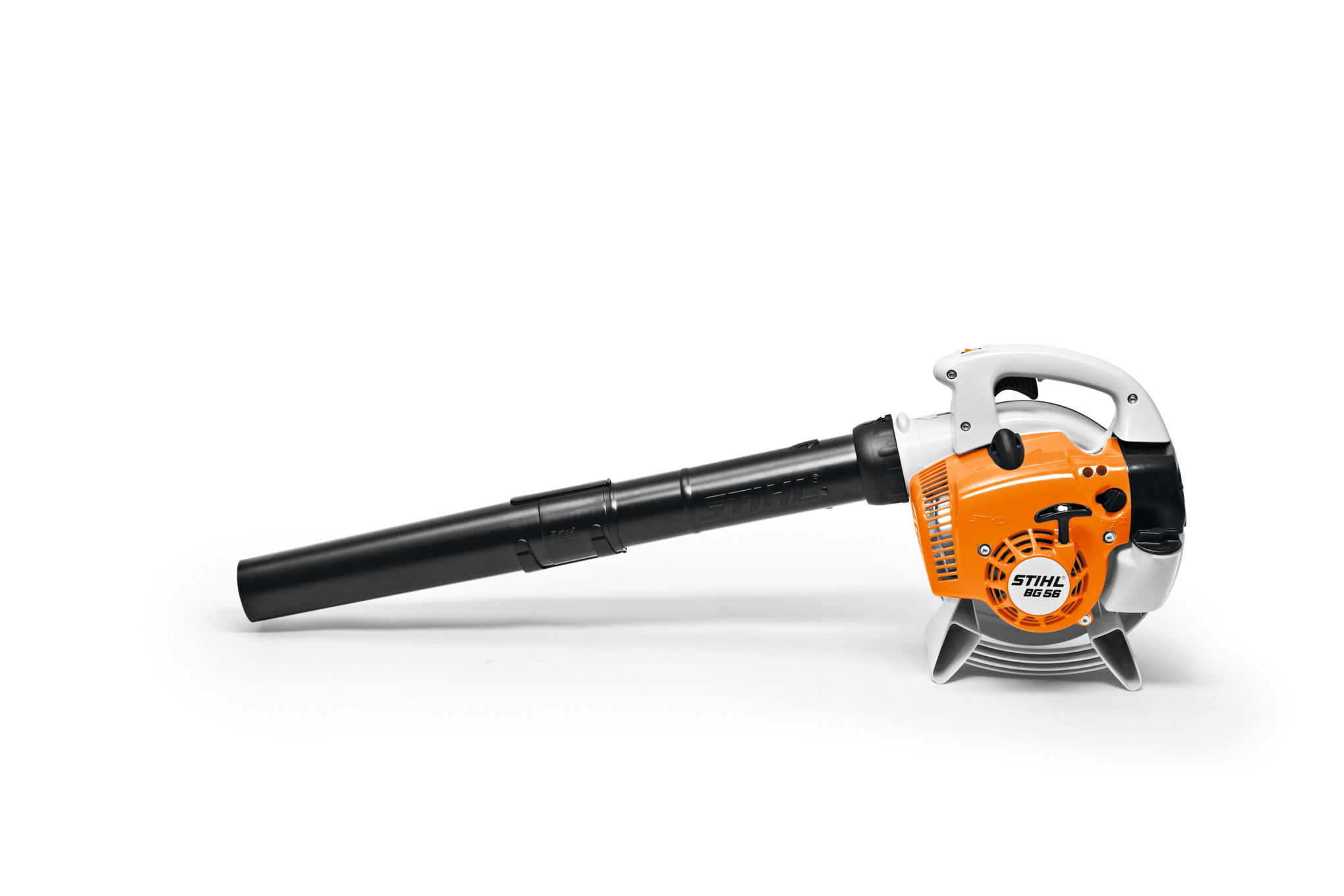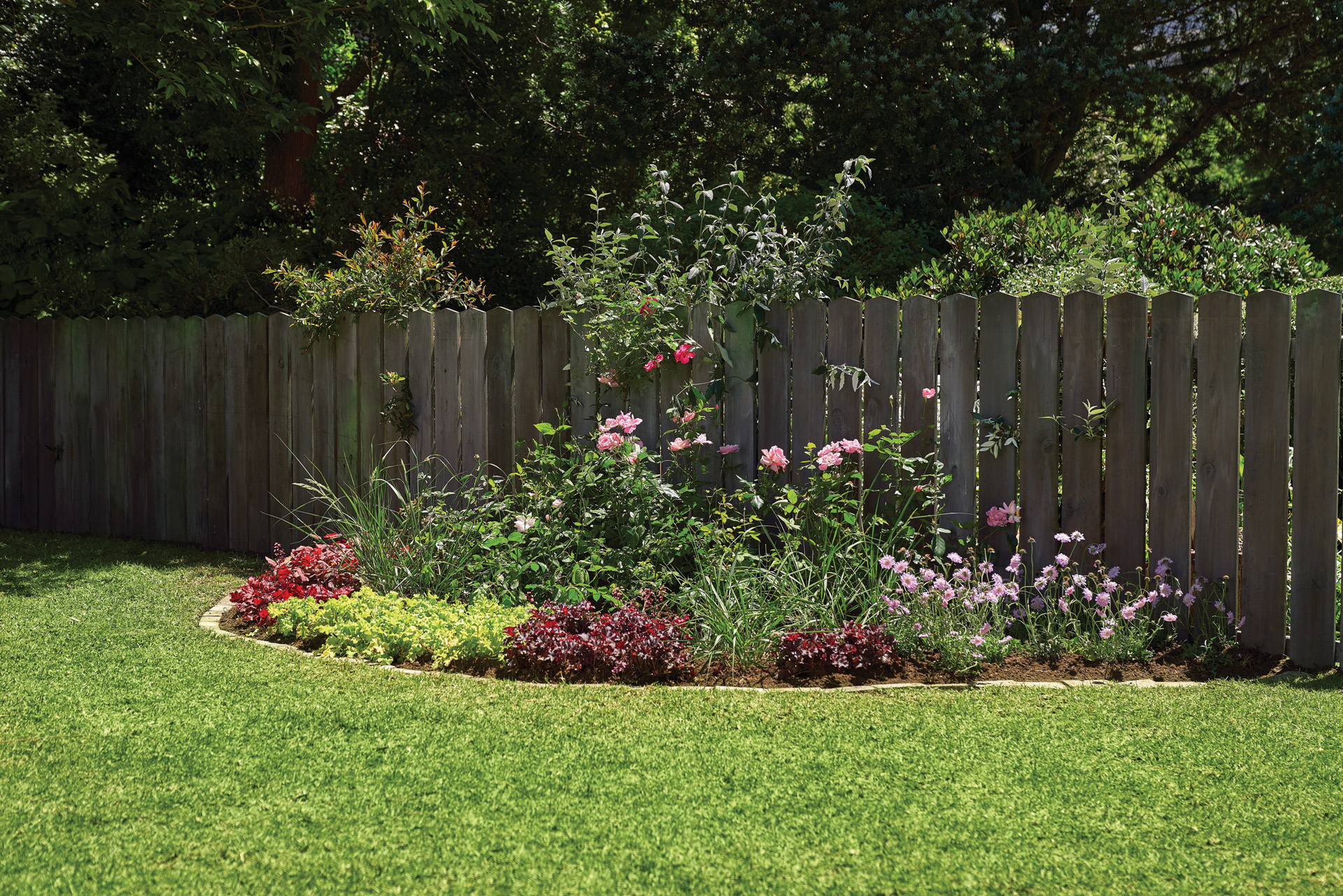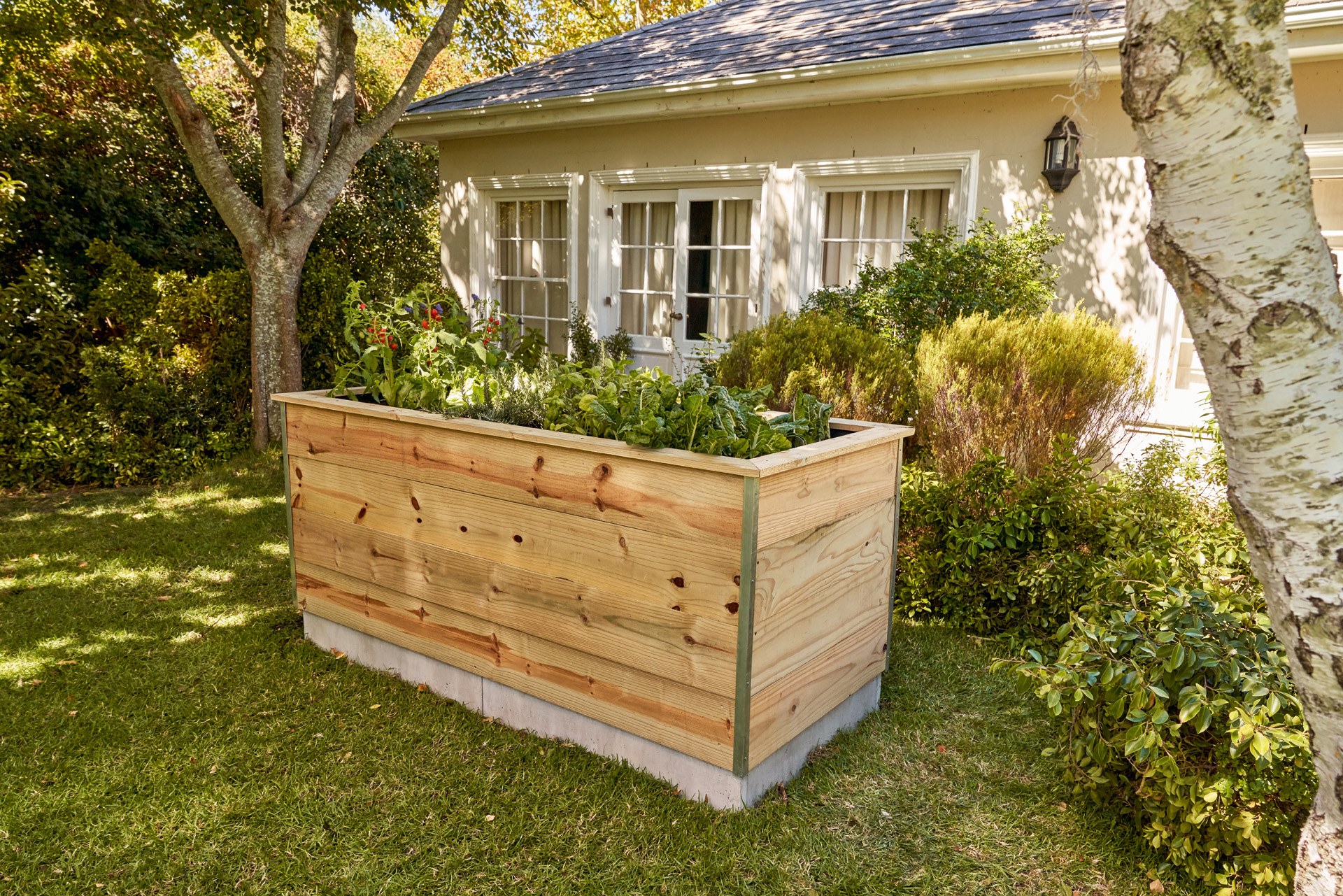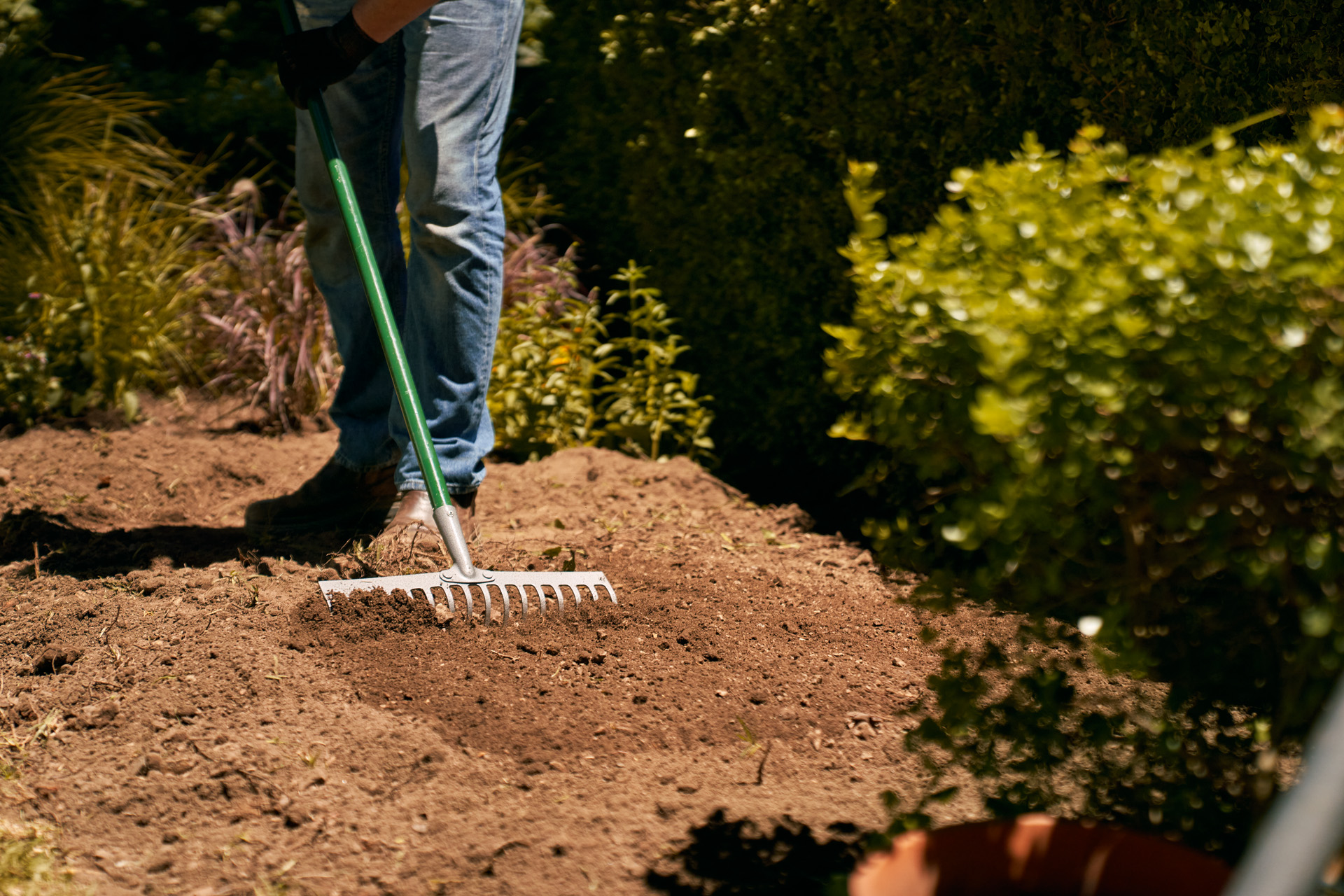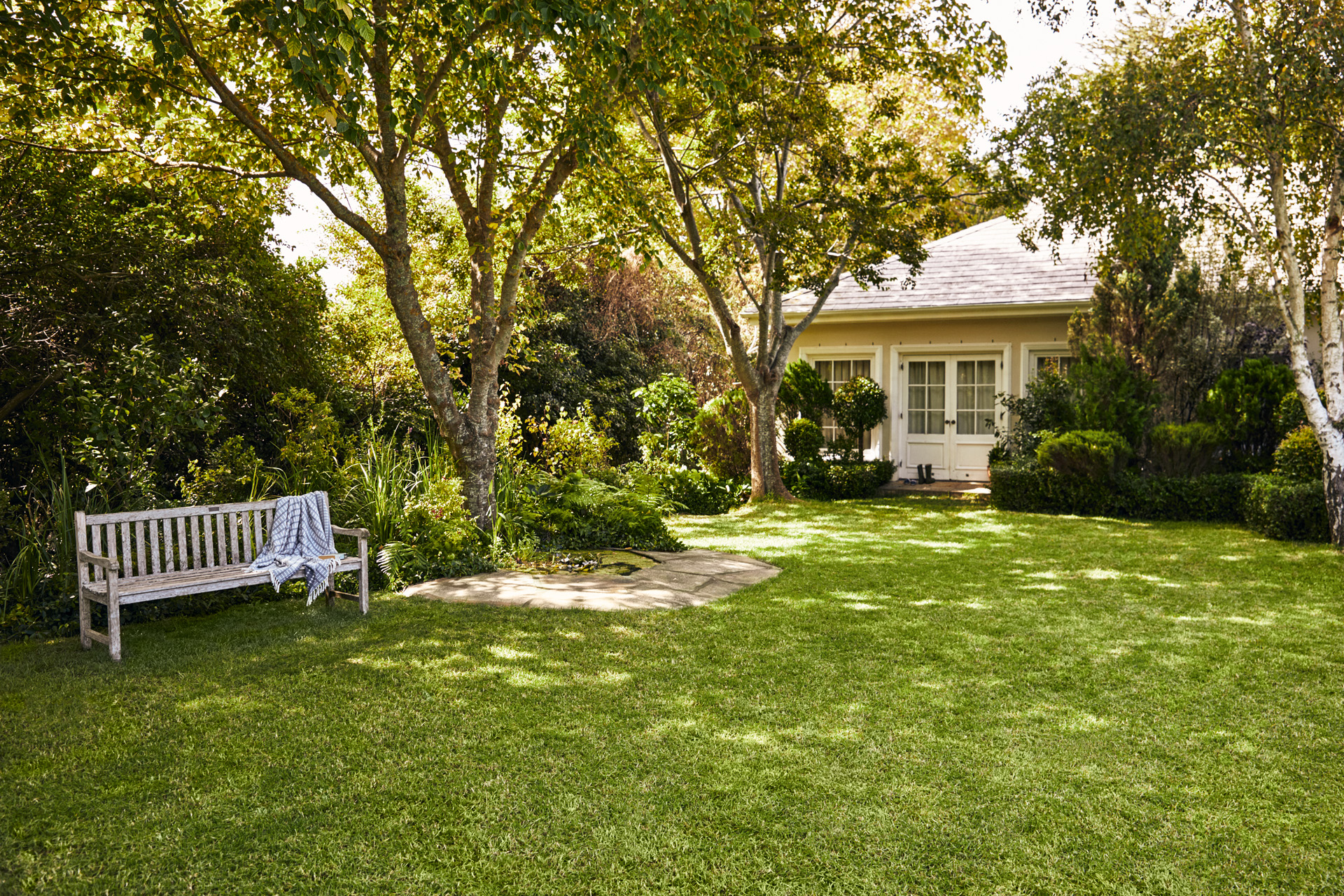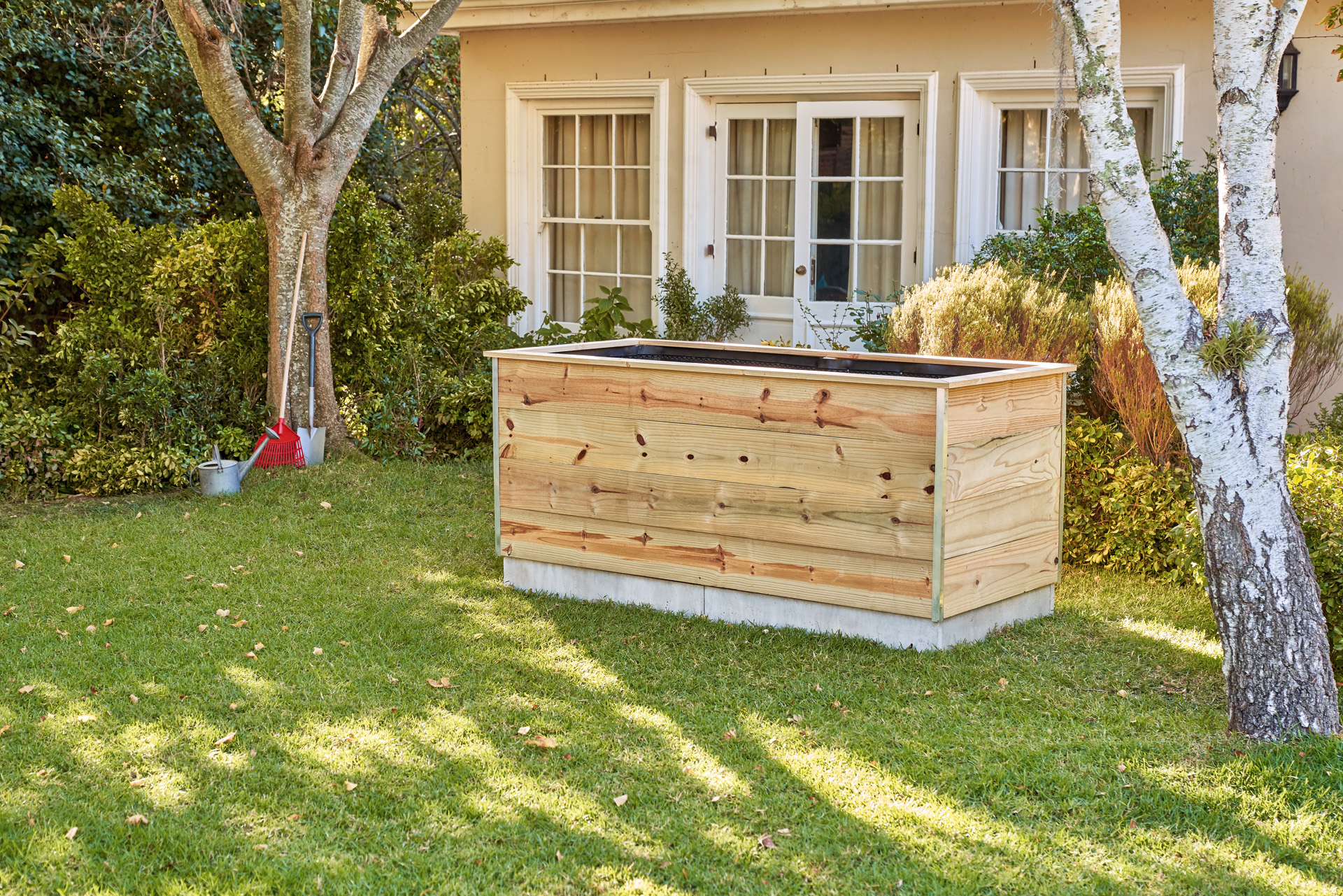Planning and planting a vegetable garden
Do you dream of a harvesting a delicious lunch from your very own garden? Make it happen with our guide to planning and planting a vegetable patch.
14.07.2023

Your own vegetable garden: a bounty at your back door
With just a few square metres to spare, you can easily grow carrots, potatoes and peas. And with a little planning, your vegetable garden could even supply your dining table all year round. Planting and maintaining a vegetable garden is not difficult, but it does take some time and commitment. We’ve put together a guide telling you what you need to know about planning and planting a successful vegetable patch.
Planning your vegetable garden: where and when to make it
Before you start on your vegetable bed, you should consider your garden and draw up a plan that reflects your growing conditions. This will guide you in your decisions about planting. We’ve put together some basic tips and ideas to help you select a good location for your vegetable garden.
Choosing the right location

Sun is key for tasty crops, so think about putting your vegetable bed in the part of your garden that gets the most sun through the day. You should also think about shelter, as many plants will not thrive in a windy spot. Small, low hedges or loose bushes such redcurrant bushes offer good protection from the wind and will shelter your vegetables without enclosing them completely. You can make your patch on an area of lawn or another unused space.
If you don’t have the open ground for a vegetable patch, you could opt for a raised bed instead: this will take up less space but does require a certain amount of manual skill.

When should I make my vegetable patch?
In principle, you can make a vegetable patch at any time of year, though it’s best to avoid it when the weather is very hot, as well as when there is a risk of frost. As such, we recommend you create your vegetable garden in spring or autumn. The added advantage of tackling it in spring is that you can begin planting it straight away. If you make the vegetable patch in the autumn, there is a danger that the weeds will take over in winter, so you will need to clear it again before you can begin planting next season. February to March is the ideal time.
Planning and planting a vegetable garden: step-by-step instructions
Do you already have a few ideas and thoughts about your new vegetable patch? We will guide you through the steps needed to transform an unused spot into a vegetable bed.
These tools can be helpful
- Measuring tape
- Hammer
- Wooden stakes
- String
- Spade
- Rake
- Digging fork
- Pickaxe
- Pen and paper
Step 1: select site and size

You should grow your vegetables in the area of your garden that gets the most sun and is also protected from wind. Draw the outline of your bed using string and stakes or by scattering chalk to mark the sides. Vegetable patches are generally rectangular, and a width of around 1.2 metres means you can reach all the plants in the bed from the sides. A single bed should not exceed four metres in length – if you have more space for your vegetable garden, make several separate beds.
Remember to include paths between the beds wide enough to work from. The main path should also be at least 80 cm wide, so that you can take a wheelbarrow down it at planting time.
STIHL pro tip: If you are aiming to be fully self-sufficient from your vegetable garden, you should plan for around 40 square metres of growing space for each person living in your house. If you have a vegetable garden of this size, you will probably not need to buy additional herbs or vegetables.
USEFUL HELPERS FOR GARDENING
Step 2: clear and prepare ground

Use a hoe to remove all undergrowth and weeds from the area you have staked out. You can find out how to remove weeds thoroughly and for the long term in our handy guide. If your new vegetable garden is located on a lawn, you will need to lift off the turf and loosen the earth underneath, which is best done with a digging fork. If the area is very overgrown and compacted, digging it over properly will help. You could use a tool such as the STIHL KombiSystem with pick tine to do this. Clay soil, in particular, benefits from this kind of digging over before you start planting, as it allows water to penetrate more easily and ensures that the soil gets sufficient oxygen.
Be aware that digging over changes the structure of soil and can upset the crucial micro-organisms. To create a vegetable patch, thorough digging over with a cultivator is only recommended if the soil is too hard or too heavy and should result in loose soil that is immediately ready for planting. It is also important to remove any stones, as these can hinder the growth of roots and root vegetables later on.
You can use boards, dowels or stones to create a border around your vegetable garden. This will keep the soil in the bed and protect against pests. You should make sure that the bed does not rise too high above the surrounding ground level, otherwise the edges will dry out.

Step 3: improve soil
Preparing the soil for your vegetable bed means adding compost or natural fertiliser directly into the ground. Bonemeal is one good way of adding nutrients to the soil. The type of soil improvement you use depends on the nature and condition of your soil. It’s worth doing extra research here, as well-prepared soil will support successful planting and a heavy vegetable harvest later.
Finish by levelling the soil surface with a rake.
Step 4: make a planting plan
Your vegetable patch is ready for planting and welcoming its new occupants home. Before you get the plants in the ground, it's useful to draw out a planting plan showing what to grow where; this will make planting easier.
At the planning stage, it is important to consider which types of vegetables go well together. The best neighbours keep pests away from each other and do not go after the same nutrients. We have put together a table with companion planting ideas when planting a vegetable garden ↓.
Make sure you leave enough space between plants – crowded vegetables will not thrive. Seed packets will usually include this information.
Mark the necessary distances and the rows for your vegetable patch on your planting plan. You might find it useful to stretch string across the bed to make sure you’re planting in straight lines. Use a rake to make furrows for your seeds or seedlings. Specialist stores also sell row makers, which you can use to create perfectly even rows at the required distances.

Step 5: sowing and planting
There are two different options for planting your vegetable garden: you can sow seeds or plant young seedlings. Both approaches have pluses and minuses. Seeds are usually cheaper, but seedlings are generally more resilient and can be harvested more quickly. Rare and unusual varieties are much easier to find in seed form.
Planting a vegetable garden: growing guide
| Name | Row spacing cm | Planting distance cm | Sowing or planting out time | Harvest time |
|---|---|---|---|---|
| Cauliflower | 40 | 40-50 | April to August | August to September |
| Broccoli | 40 | 50 | Sow April; plant out April to May | June to October |
| Bush beans | 60 | 5-10 | Sow May to July | July to October |
| New potatoes | 60 | 40 | Plant seed potatoes from April | June to August |
| Lettuce | 30 | 25-30 | Sow March to July; plant out April to August | May to October |
| Loose leaf lettuce | 30 | 15-20 | Sow April to August | June to October |
| Chard | 20 | 30 | Sow March to June; plant out April to June | June to August |
| Carrots | 20 | 3-6 | Sow end March to July | May to October |
| Leek | 30 | 15 | April | August to December |
| Radish | 20 | 10-15 | Sow March to August | April to October |
| Red cabbage | 50 | 50 | Sow April; plant out May | July to October |
| Tomatoes | 60 | 50 | Sow indoors from February; plant out May to June | July to October |
| Onion | 25 | 10 | Plant sets end March or April | August to September |
Companion planting: what grows well together?
When planting a vegetable garden, it generally makes sense to cultivate a variety of crops. In fact, some herbs and vegetables make particularly good garden companions because they help protect one another from pests and contribute to growing successfully together. Equally, some plant pairings should be avoided because they may actually impair each other’s growth. We have summarised some of the key companion planting rules to help you plan your growing to best effect.
| Plant | Tips | Goes with | Does not go with |
|---|---|---|---|
| Broccoli | Needs large quantities of water regularly | Beans, peas, potatoes, lettuce, celery, tomato | Garlic, onions, strawberries |
| Potatoes | New potatoes can be harvested early in the year | Cabbage, kohlrabi, spinach | Tomatoes, pumpkin, celery |
| Chard | Harvest outer leaves only | Radishes, carrots, cabbage | Spinach, beetroot |
| Carrots | Harvest within 8 weeks | Onions, leek, radishes, peas | Leek, beetroot, new potatoes |
| Pepper | Germinate indoors and plant out in a sunny location | Parsley, celery, basil, leek | Cucumber, potatoes, peas |
| Beetroot | Harvest from September | Onions, lamb’s lettuce | Spinach |
| Tomato | Often happier in a greenhouse than in a bed. | Peas, basil | Potatoes |
| Courgette | Needs a lot of water and warmth | Lettuce, carrot, beetroot, radishes, celery, onions | Tomato, cucumber, potatoes, radishes |
| Onion | Harvest only when leaves are yellow and withered | Dill, lettuce, carrot, beetroot, strawberries | Peas, brassicas |
Other tips for your vegetable garden
We have put together a few more general tips so you can continue to enjoy your vegetable patch for a long time to come by keeping your soil healthy and minimising the risk of diseases affecting your crop.
Crop succession and crop rotation
Each plant draws a particular profile of nutrients from the soil, and understanding this should guide your crop succession choices. For example, potatoes should not be planted immediately after tomatoes, aubergines, peppers or chillies. By contrast, lettuce and peas thrive particularly well in soil from which potatoes have previously been harvested. Crop rotation is worthwhile not only to manage the nutrient composition of your soil but also because growing the same vegetable in one spot every year increases the risk of diseases and pests overwintered from the previous year.
We have set out a few recommendations for you here.
Crop succession during the season:
You should not plant vegetables from the same family of plants after one another in the same bed. Remember that green manure also counts as a crop.
Crop rotation – using multiple beds from year to year:
Plants with high, moderate and low nutritional needs and green manure should be rotated on an annual basis. If you grow heavy feeders such as potatoes, you should leave that spot fallow the following year and instead plant your hungrier vegetables in a bed that was previously used for plants with moderate nutritional needs (carrots, lettuce). Plants with low nutritional needs, such as radishes, should be moved to a bed in which green manure was grown.
STIHL pro tip: planting out onions correctly
Onions are a rewarding crop and easy to grow in a vegetable garden. We have a few planting tips that may help to make the work easier: if you plant onion sets when they are dry, moisture in soil can cause them to swell up and push their way out of the ground, so you may find that your onions “unplant” themselves. To prevent this, soak your onion sets in lukewarm water, preferably overnight, before planting them. First, make sure that the tip with the shoot protrudes clearly above the soil, then scatter a little soil over the top so that blackbirds do not pull the onions out of the ground. You should only buy onion sets with bulbs about the size of a hazelnut, as these are less likely to shoot later on. With many shallot types (elongated, often reddish bulbs), large bulbs produce the greatest harvest.

Green manure
Keeping your vegetable garden healthy means allowing it to rest from time to time. During these fallow seasons, planting green manure plants in your vegetable garden is a good way of providing the soil with valuable nutrients while also suppressing weeds. Clovers and lupins are good green manure varieties. Sow seeds for green manure in autumn; after harvesting, leave them over the winter, then cut them down and dig the cuttings into the soil, where they can provide goodness for bumper crops. It’s also worth planting green manure if you plan to leave a bed empty for an extended period.
Winter vegetables
Your vegetable garden need not go unattended during the cold season. Winter vegetables such as various types of cabbage or lamb’s lettuce are ideal for a late harvest. Our guide also explains how to winterproof your vegetable patch.
Maintenance and watering
If you rake your vegetable patch regularly, you will not need to water it too often. Raking affects the soil structure by causing less water to evaporate. Just how much water you need to provide depends on what you’re growing, as well as the weather, of course. Please note that it is generally better to water generously but less frequently than to water little and often. Collected rainwater is perfect for watering your plants.
We recommend leaving your vegetable garden to rest completely every three years so that it can regenerate. If it is constantly occupied by plants, the soil quality can deteriorate in the long term and the nutrients become depleted.

Summary: planning and planting a vegetable garden
- When planning a vegetable patch, you should choose a sunny location with some protection from the wind.
- A width of approximately 1.2 m and a length of 4 m will allow for easy access to work in.
- You can put your new vegetable bed on part of the lawn or in an unused area of the garden.
- First remove overgrowth and turf from the surface. When loosening the soil, be sure to remove any stones and weeds you come across.
- Depending on the structure and quality of your soil, you can add compost or bonemeal to improve it.
- When selecting vegetables to plant in your vegetable patch, choose varieties that make good neighbours: not all plants grow well together.
- Vegetable gardens are generally easy to care for, but they do benefit from a rest or sowing with green manure every three years.
You can plant a vegetable garden either in autumn or in spring. It is important that the weather is not too hot or frosty. We recommend planting a vegetable garden in spring so that the patch does not become overgrown during autumn and the often mild winters.
When you plant which vegetables depends on your own preferences. Early potatoes can be planted in spring from April. Chard or carrots can also be sown from April to June. A little later, you can plant peppers and beetroot in the bed. In late summer, radishes and lamb's lettuce can grow again.
The right soil for most vegetables is deep, loose and nutritious, without stones and weeds. Depending on the condition of the soil, you should work compost or natural fertiliser into it in preparation. Soil analysis provides clarity about the needs of the soil.
Vegetables that attract similar pests or that take away each other's nutrients are not compatible. For example, potatoes, tomatoes and carrots are less likely to fit together in a bed. Peppers, potatoes and peas are also not particularly compatible. Onions and dill are also not great planted together.
Vegetables that come from different plant families go together as they keep pests and fungi away from each other. Good neighbours in the bed also don't take nutrients away from each other. Carrots, for example, go well with onions, leeks or peas. Potatoes get along well with cabbage or spinach. Beetroot and cabbage also harmonise well.
